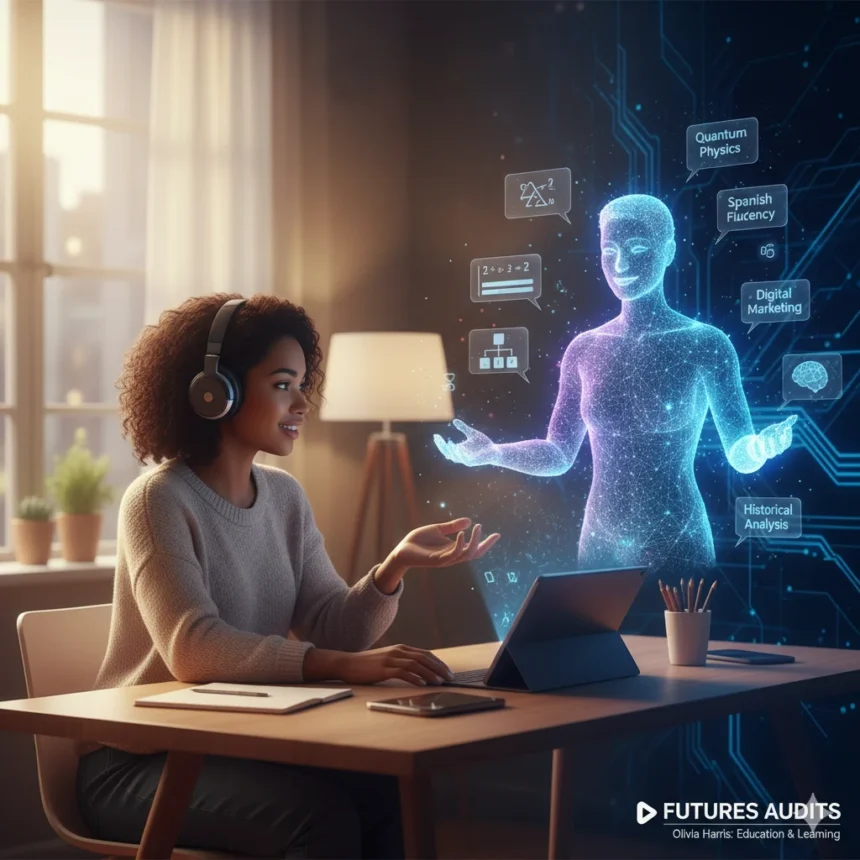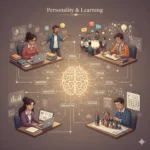Every student is unique. We all know the theory: education should adapt to the student, not the other way around. This is the promise of personalized learning a dream of tailored instruction, customized pacing, and 1-on-1 support. For decades, it was a utopian vision, impossible to deliver because of a single, non-negotiable constraint: teacher time.
How can one teacher manage thirty different study plans, offer real-time feedback, and address thirty different skill gaps? The answer is, they can’t.
But with the rapid integration of Artificial Intelligence (AI) in the classroom, that utopian dream is finally becoming scalable and accessible. The Personal AI Tutor is here, and it’s revolutionizing how we learn by identifying, adapting, and guiding every student, everywhere.
The Core Mechanism: How AI Actually Personalises
AI doesn’t just grade tests; it analyses your entire learning journey. This process of true personalization is built on three key AI capabilities: Real-Time Analytics, Adaptive Scaffolding, and Intelligent Tutoring Systems (ITS).
1. Real-Time Diagnostics: The ‘Brain Scan’ for Learning
Personalization begins with data. AI platforms gather detailed learning analytics by monitoring every interaction: how long you spend on a question, which distractors you choose in a multiple-choice quiz, and the conceptual step where you consistently stumble.
- The Power of Predictive Analytics: By cross-referencing this data with historical performance, AI can identify a future problem before it hurts your grade. For example, the system can flag that your difficulty with factoring polynomials actually traces back to a weak understanding of basic arithmetic operations from two years ago. This insight is impossible for a human teacher to glean quickly, but AI delivers it instantly.
2. Adaptive Scaffolding and Pacing
Once the learning gap is identified, the AI adapts the content and pace to fill it, operating as an adaptive learning platform.
- Custom Content Delivery: If you’re struggling with a concept, the AI doesn’t just tell you to review the textbook; it might generate a new interactive simulation, an explainer video, or a new set of practice problems focused only on your specific area of weakness.
- Intelligent Pacing: If you ace a section, the AI quickly moves you to the next challenge, preventing boredom and maintaining engagement. Conversely, if you falter, it provides tailored hints and scaffolds you back up to the main problem, ensuring you don’t receive the final answer but rather the guidance needed to solve it yourself. This is the principle used by platforms like Knewton and DreamBox.
3. The Tutor, Not the Grader
The most significant shift is AI’s role as a patient, non-judgmental coach. Platforms like Khanmigo (Khan Academy’s AI tutor) and language apps like Duolingo embody this shift.
- Socratic Guidance: Unlike traditional chatbots that answer questions (the “cheating” risk), the best AI tutors employ Socratic questioning. They ask thought-provoking questions and guide you toward the solution, forcing you to develop the critical thinking skills to solve the next problem independently.
- Instant, Contextual Feedback: In language learning, AI uses speech recognition to provide real-time feedback on pronunciation and grammar. This immediate correction dramatically accelerates the learning curve compared to waiting days for a human instructor’s review.
Practical Tools for Learners Today
As an education enthusiast, I see the Personal AI Tutor not just as a classroom tool, but as a resource for lifelong learners. Here’s how you can leverage these platforms right now:
Beyond the Hype to Human-Centred Learning
The research is clear: personalized learning delivered by AI leads to statistically significant improvements in student achievement and engagement (Case studies on K-12 implementation frequently cite these gains).
However, we must approach this revolution with our eyes open to the challenges:
- Data Privacy and Bias: The power of AI rests on collecting vast amounts of student data. Ethical governance is paramount to ensure this data is protected and that AI algorithms don’t perpetuate existing educational biases.
- The Teacher’s Evolved Role: The AI tutor does not replace the human teacher. Instead, it frees them from the administrative burden of grading and differentiation. The human educator’s new role is elevated: focusing on soft skills, emotional intelligence, collaborative projects, and fostering the critical thinking that AI can only guide, but never fully emulate.
The Personal AI Tutor is more than just a novelty; it is the infrastructure we needed to finally move education from a one-way lecture to a dynamic, individualized journey. It empowers every learner to set their own pace, close their own gaps, and truly own their education. It’s an exciting time to be an enthusiast!




